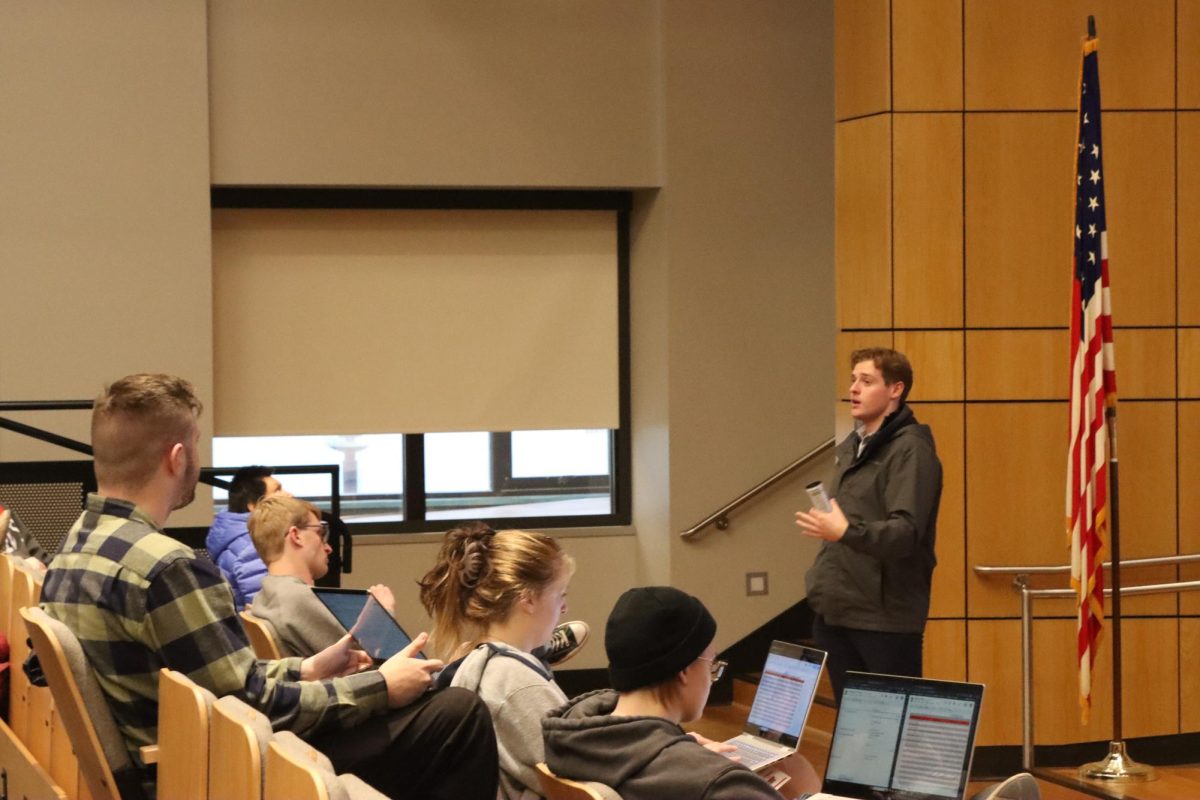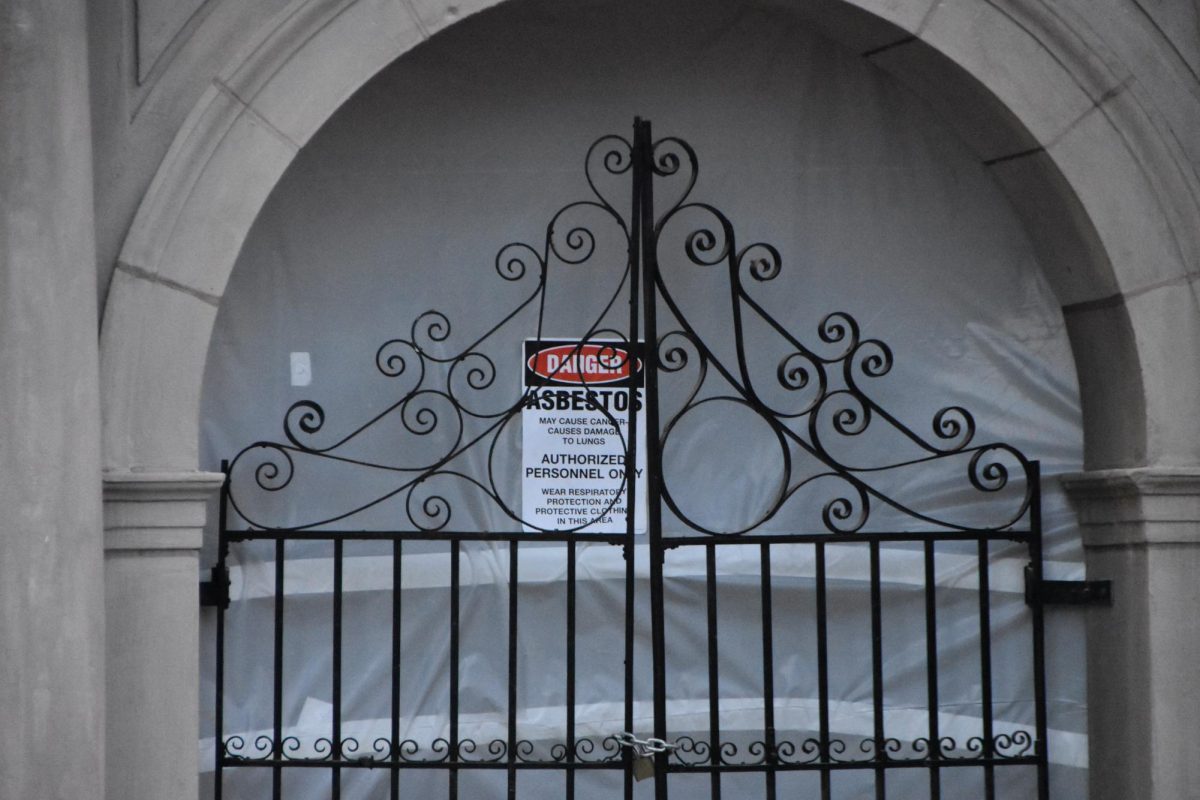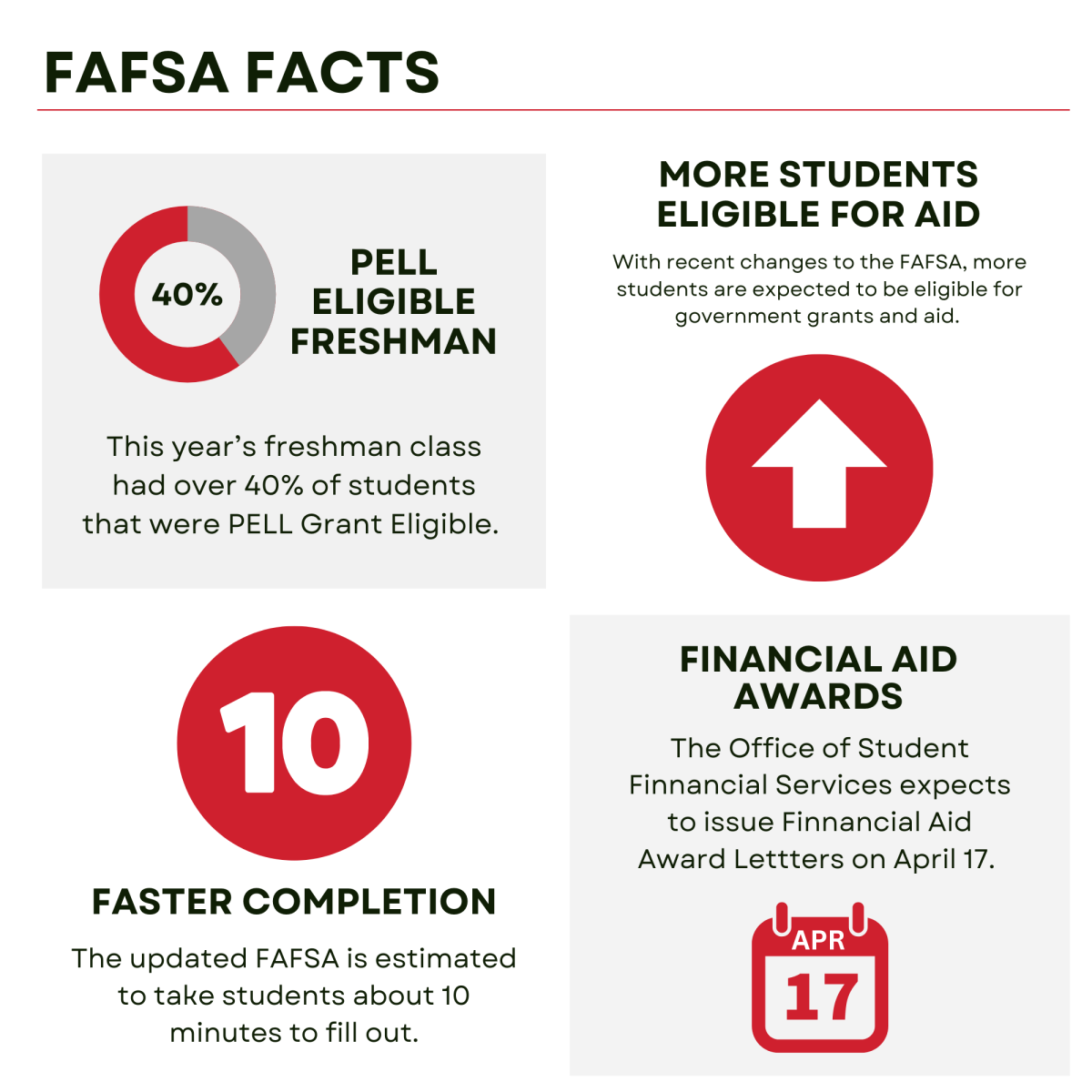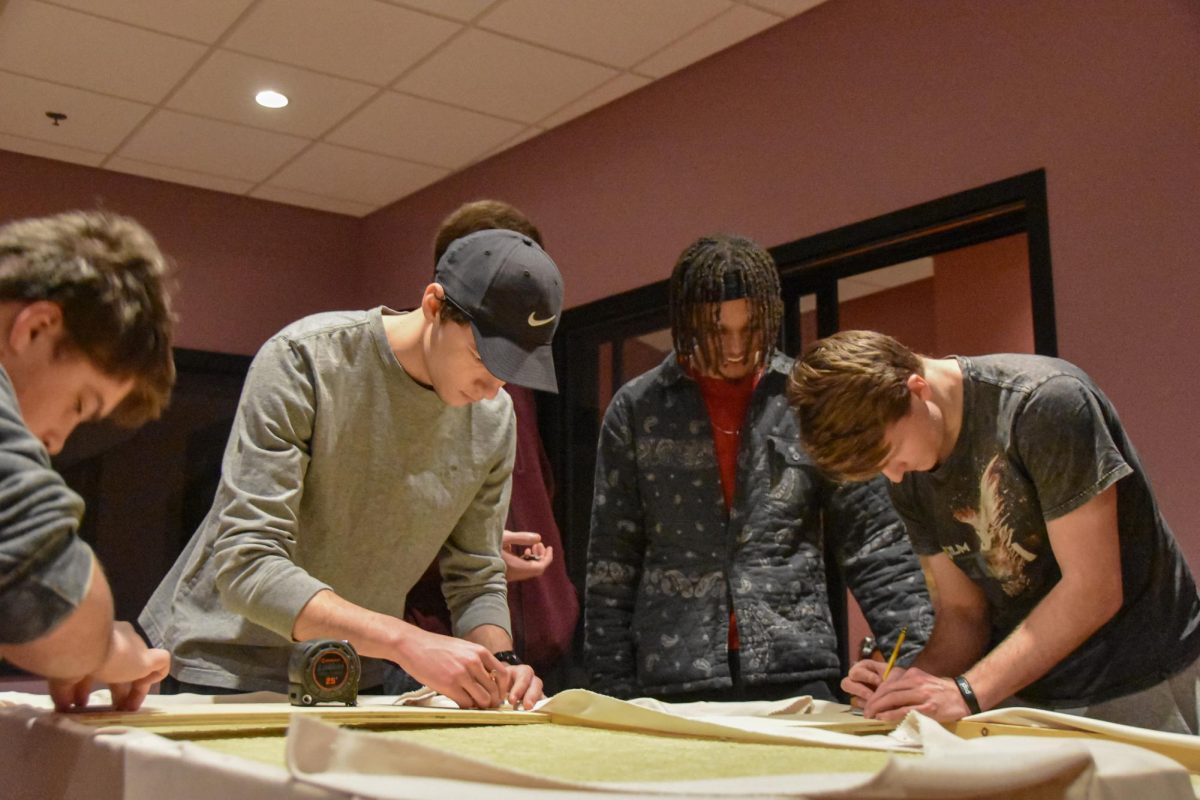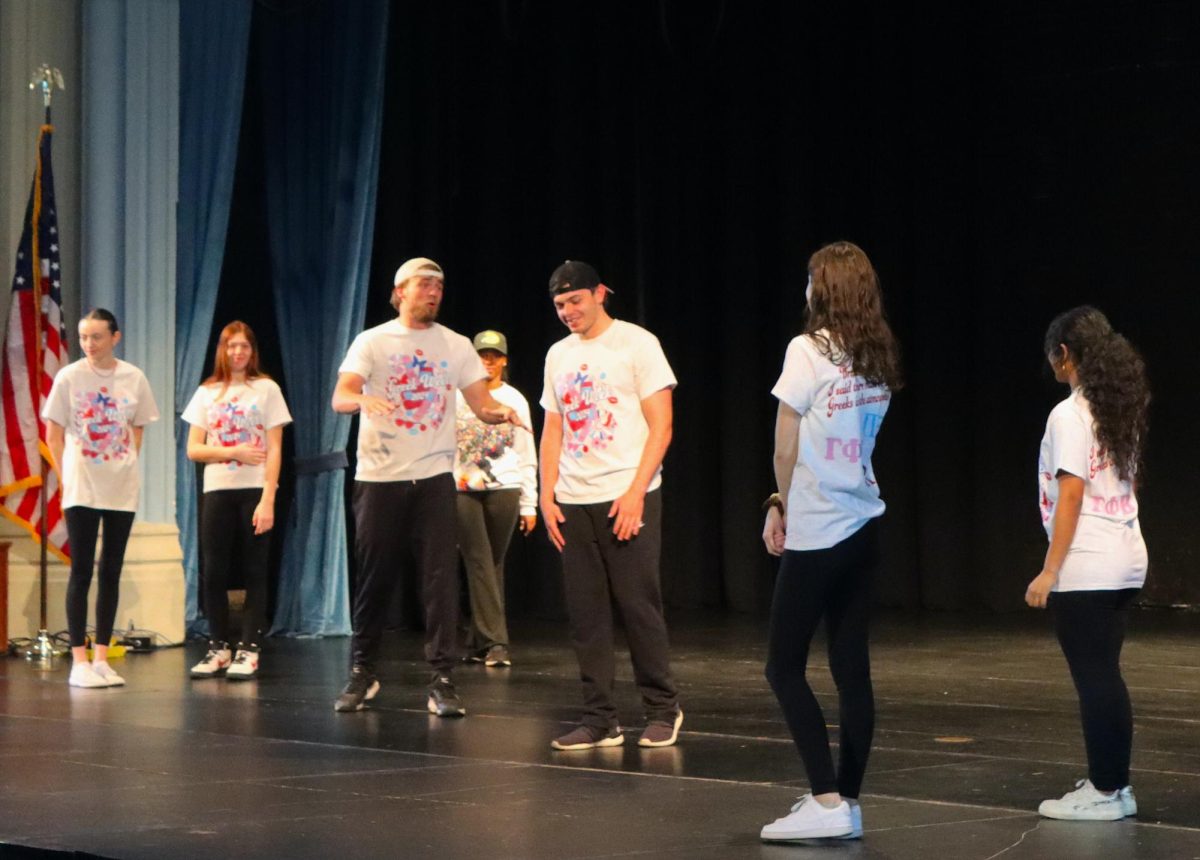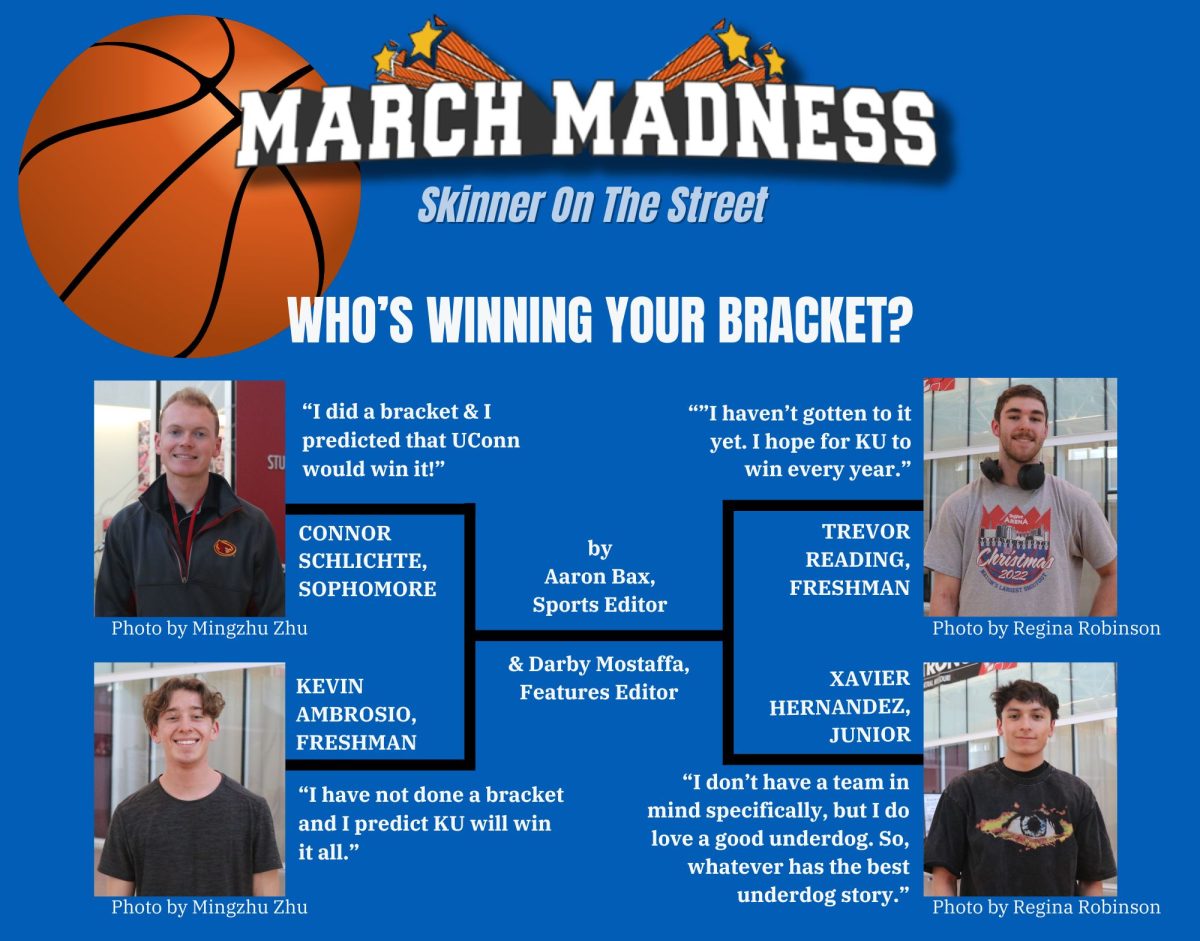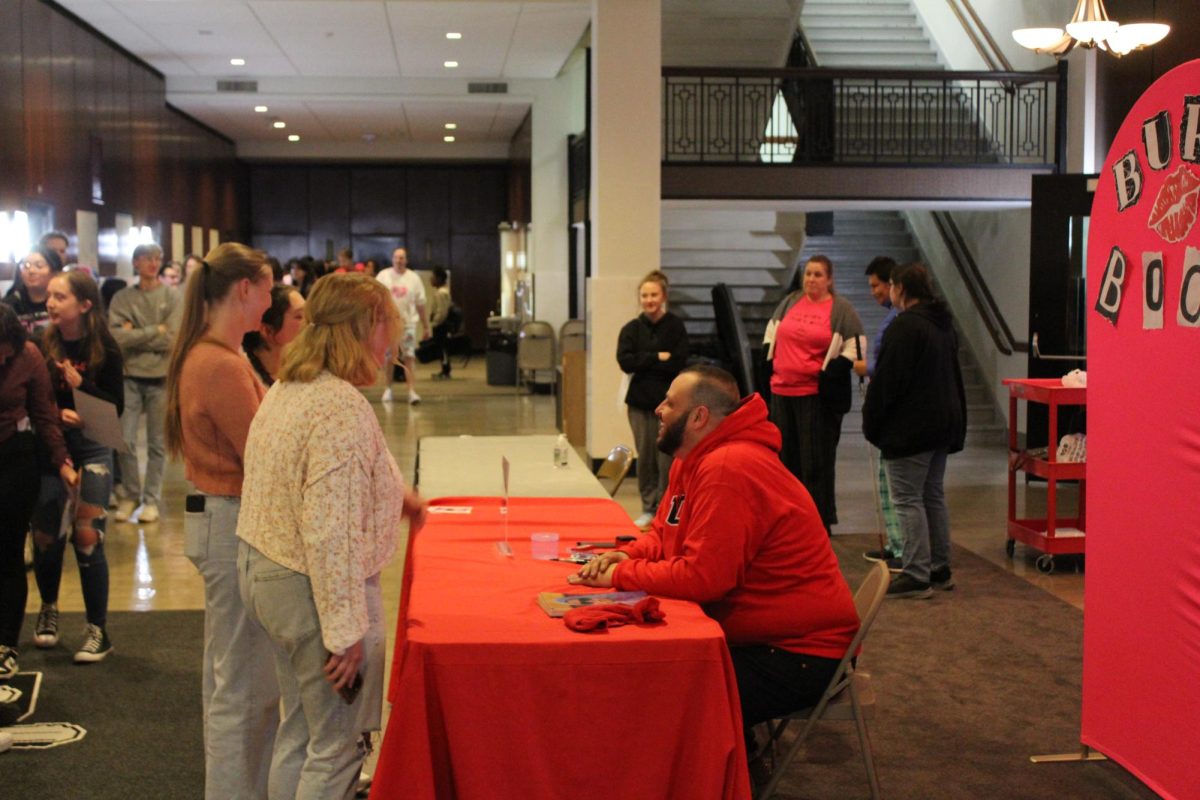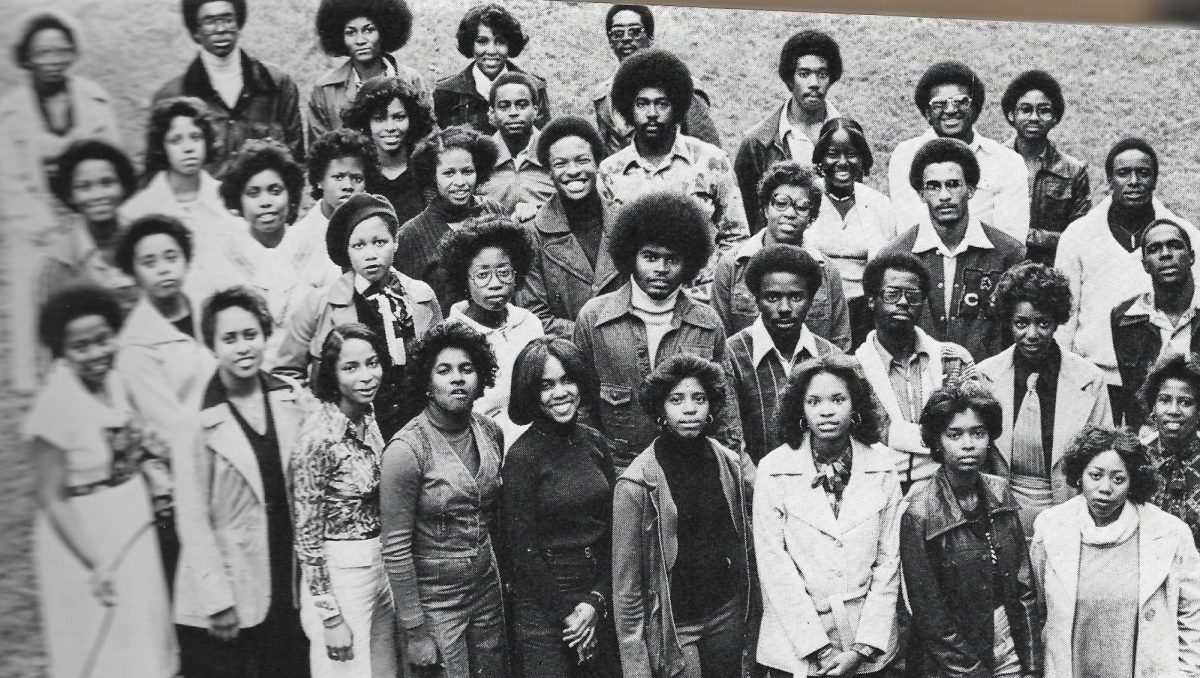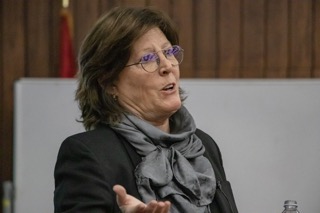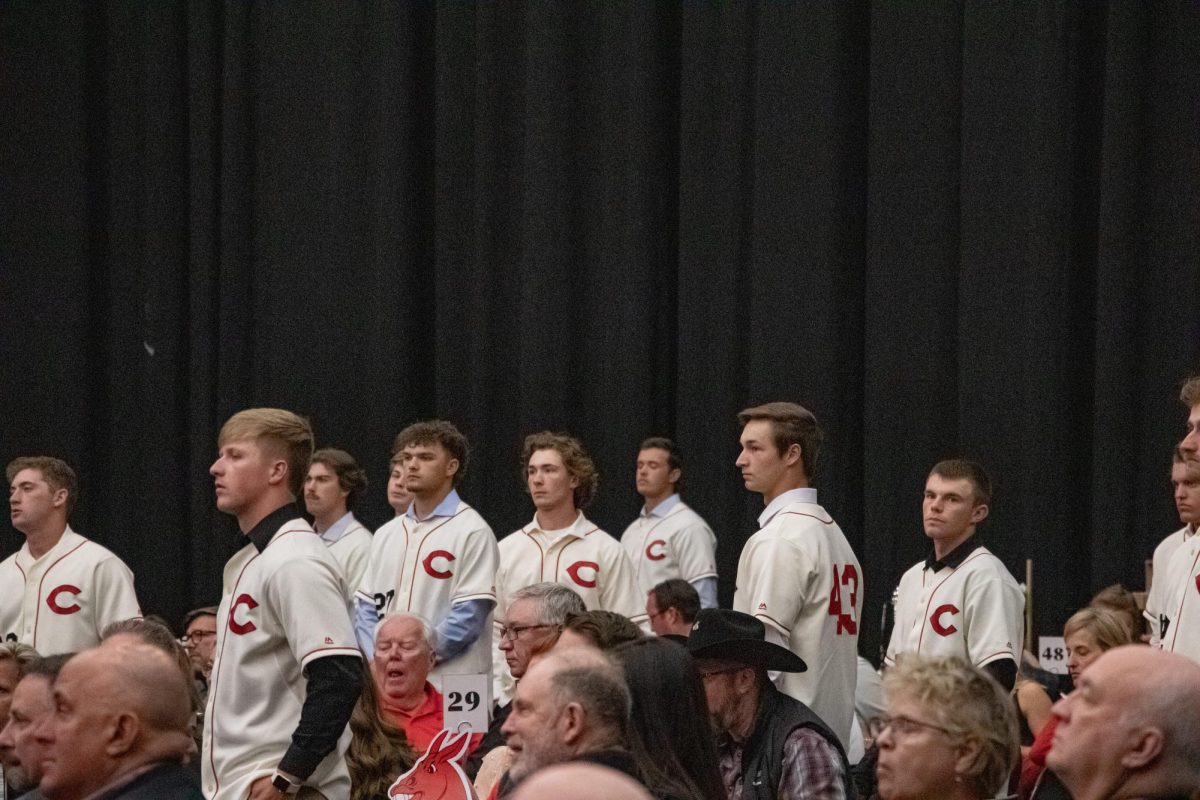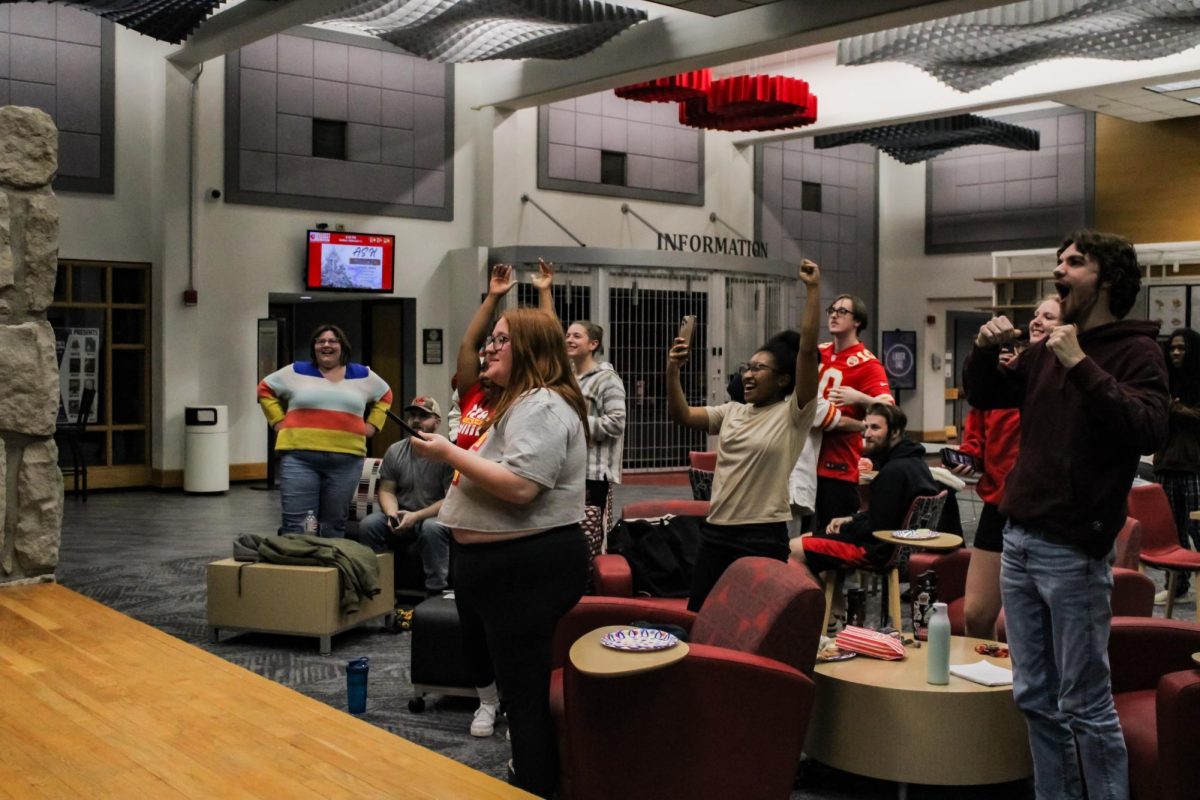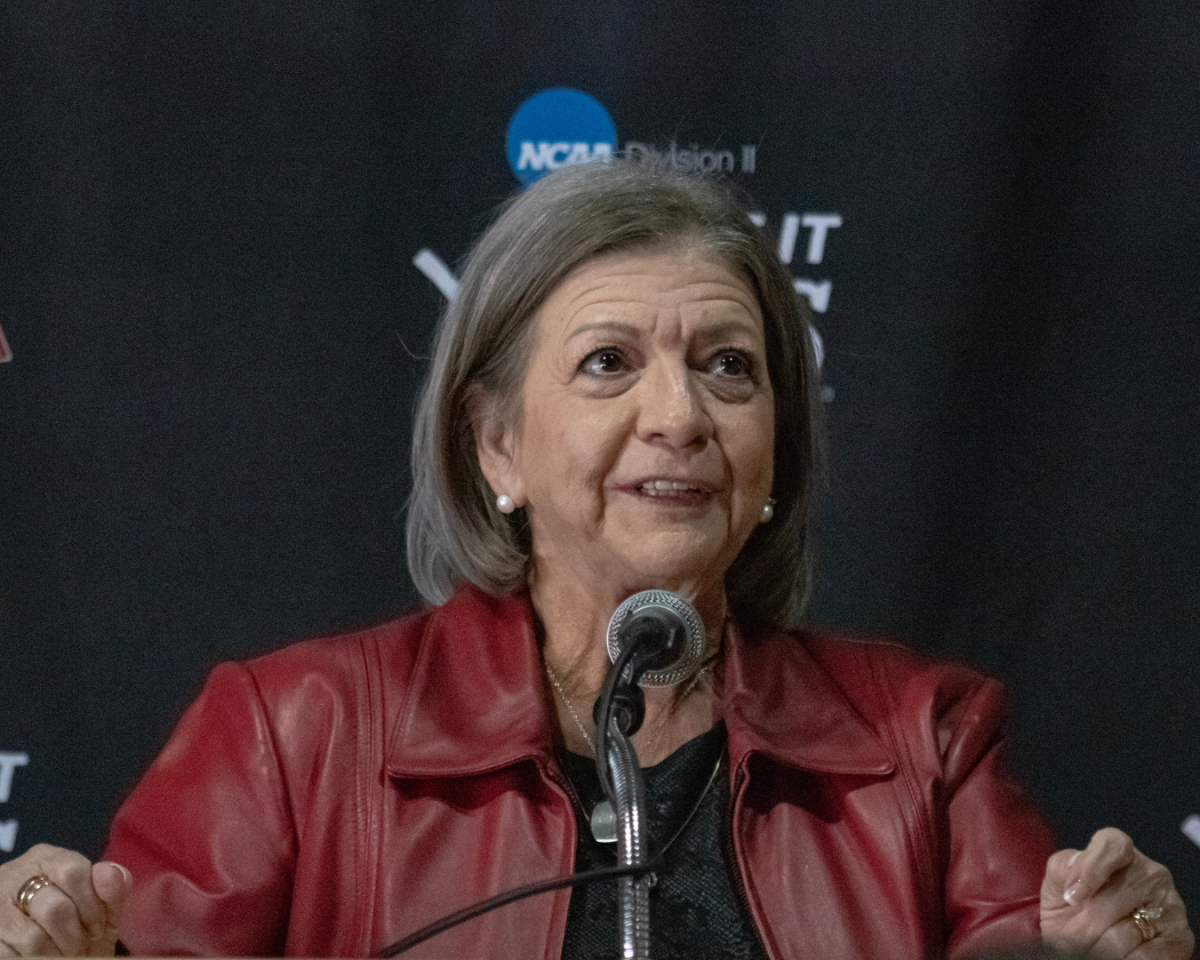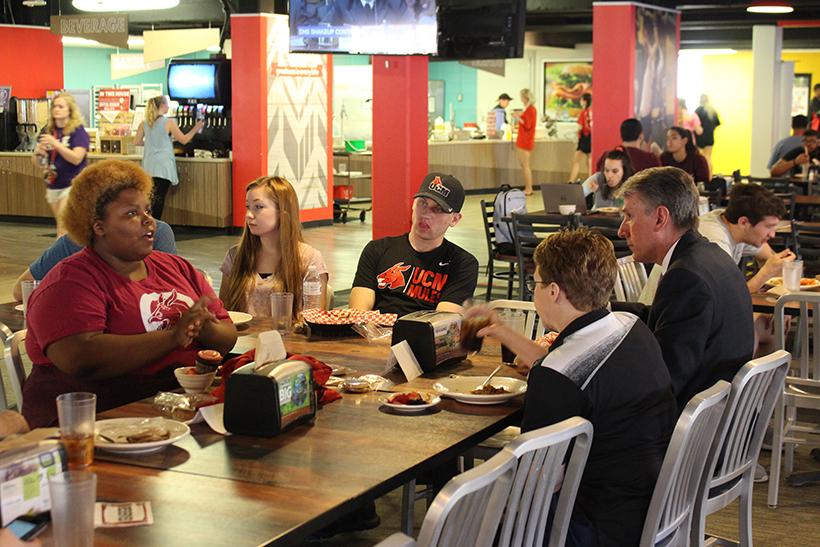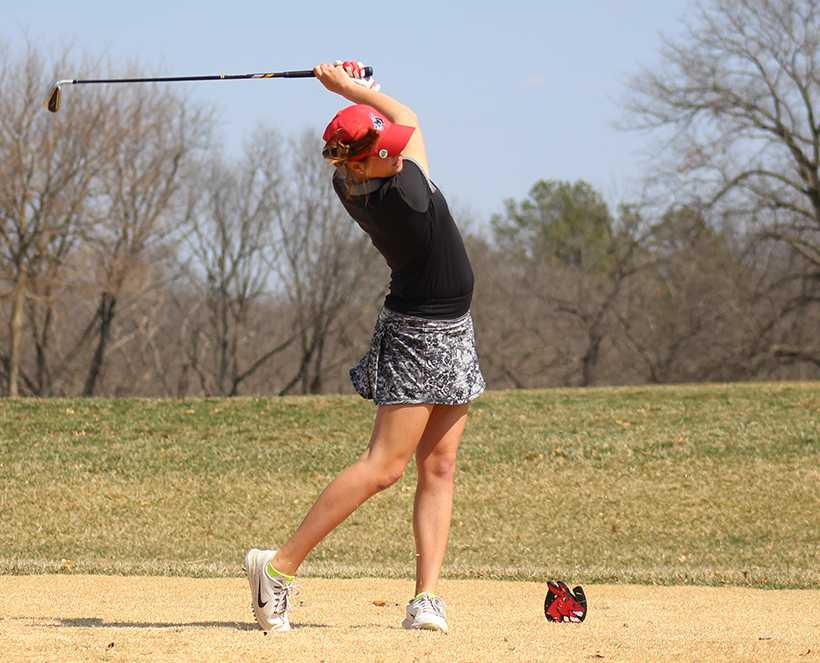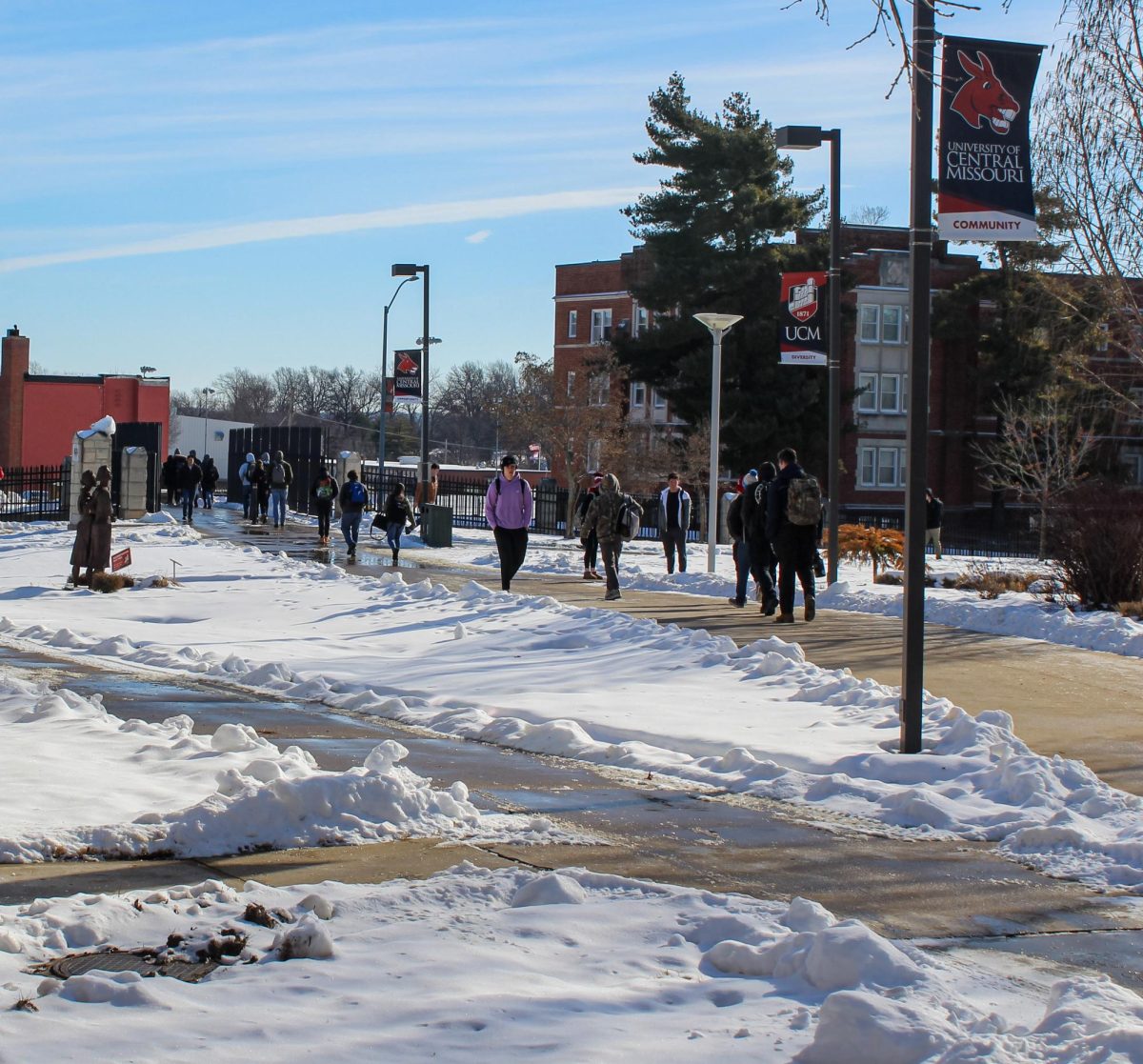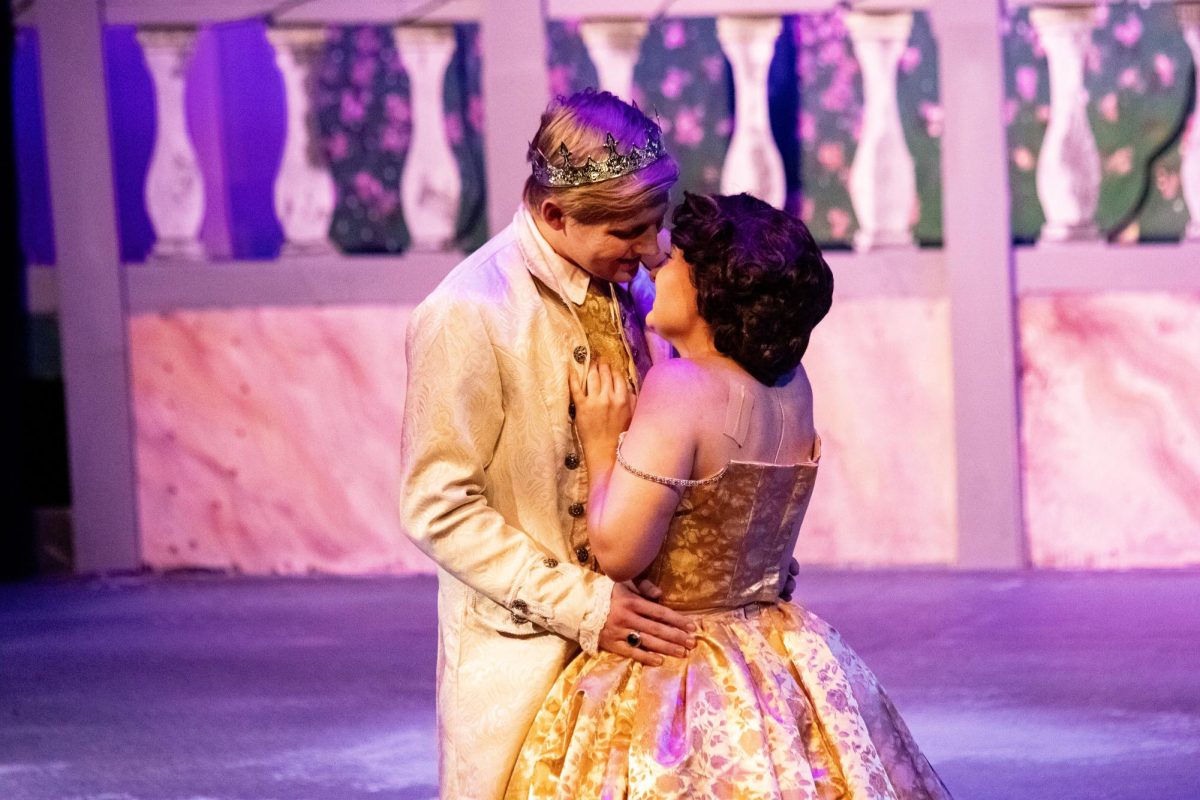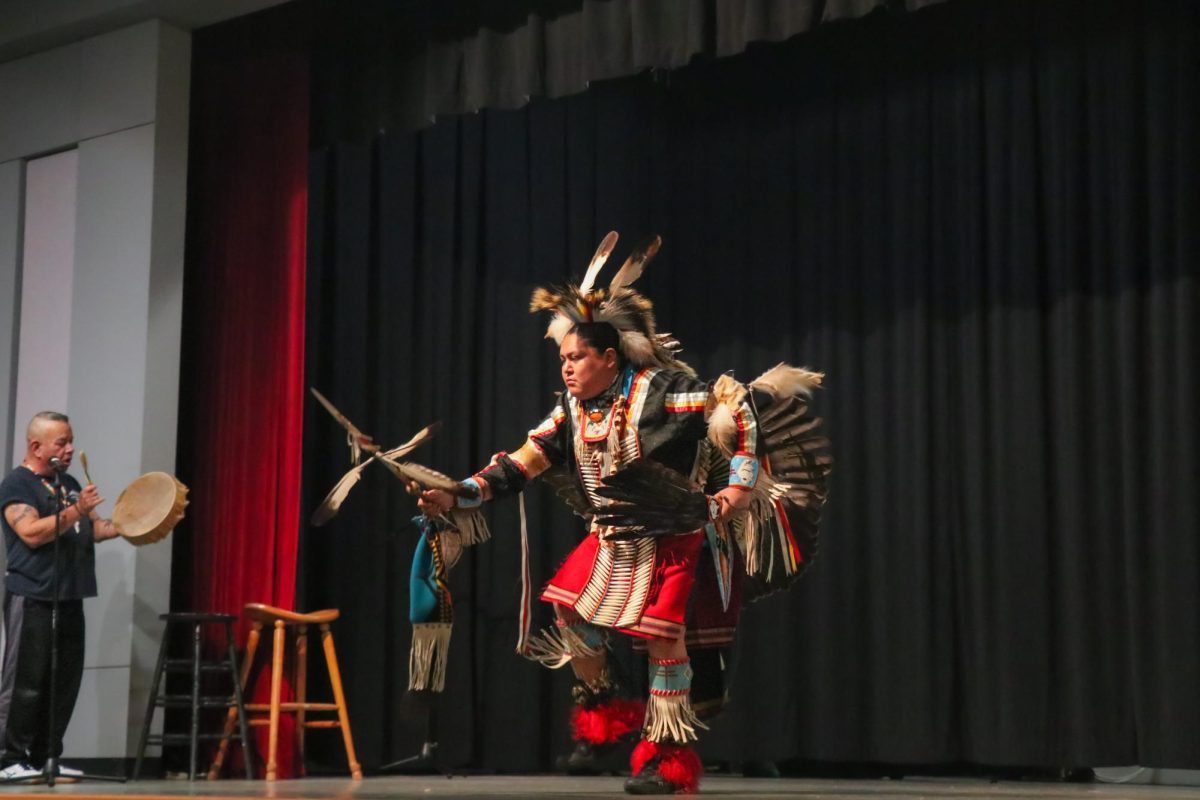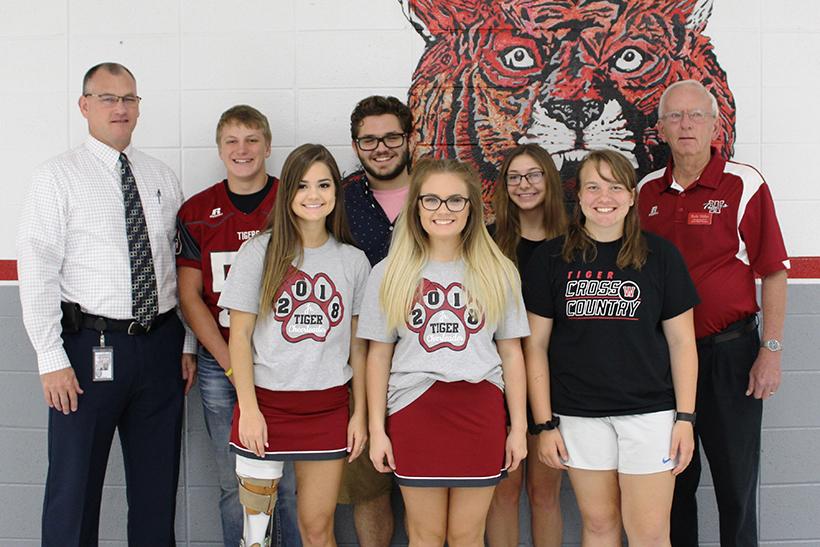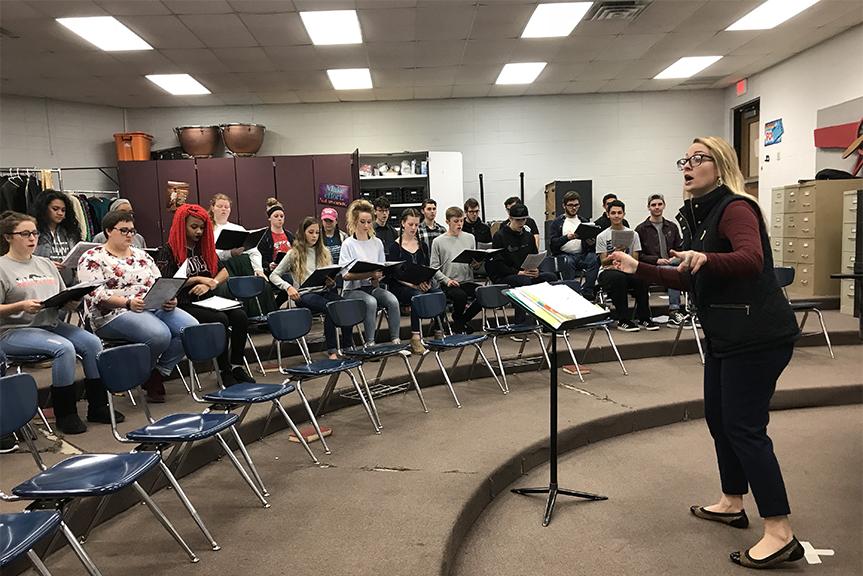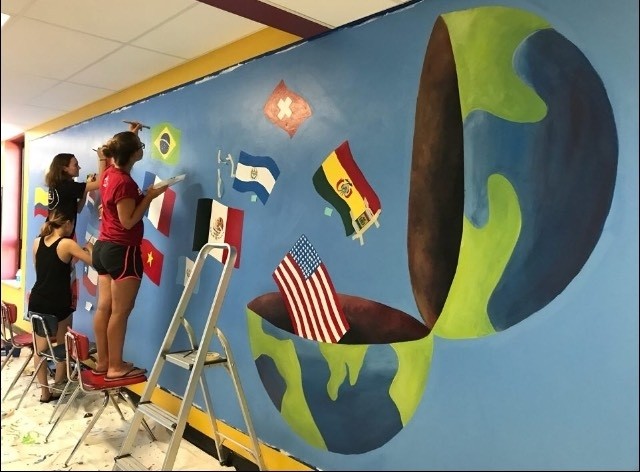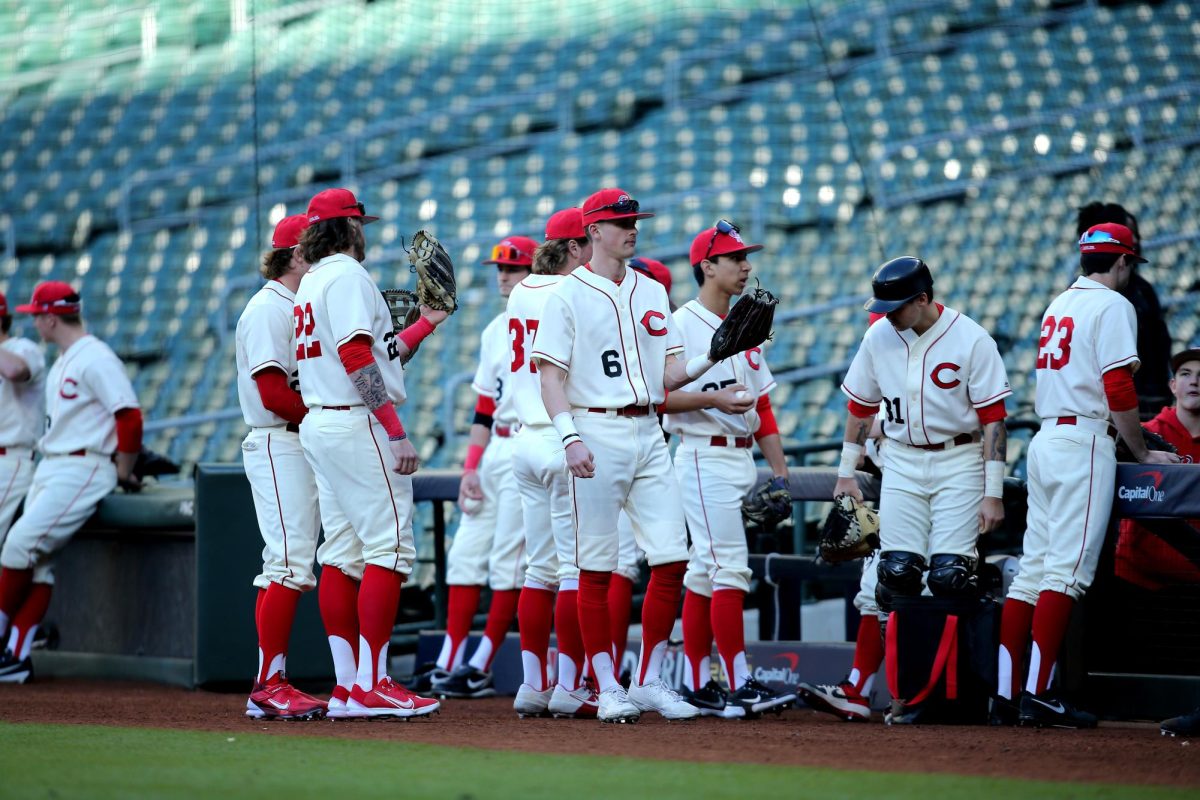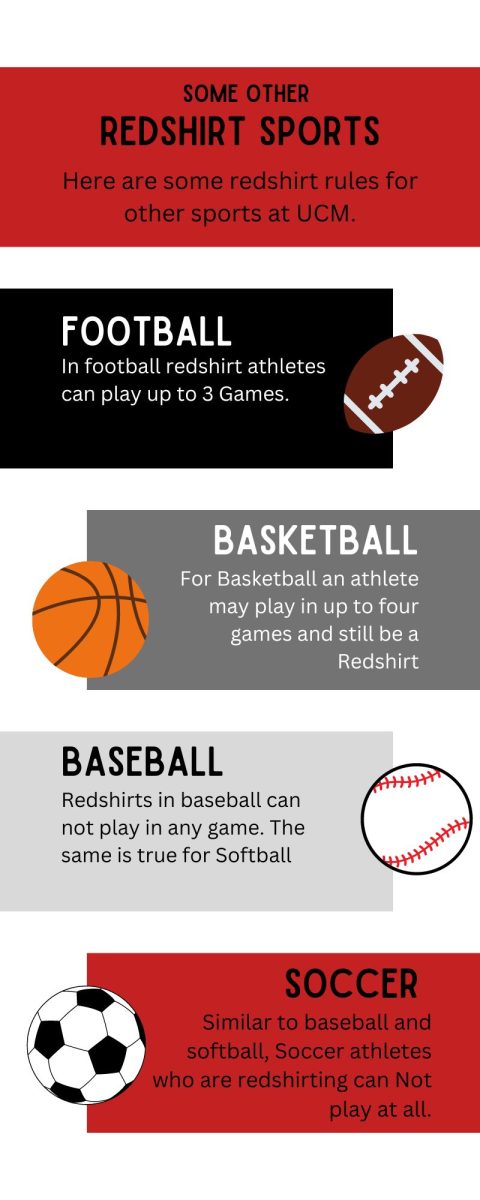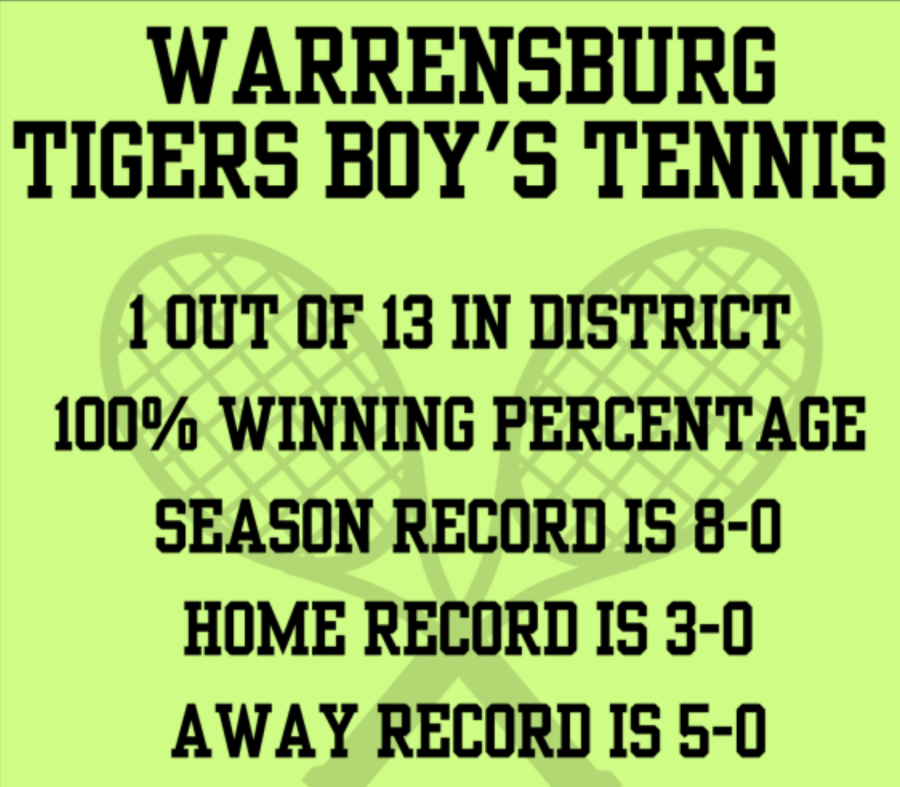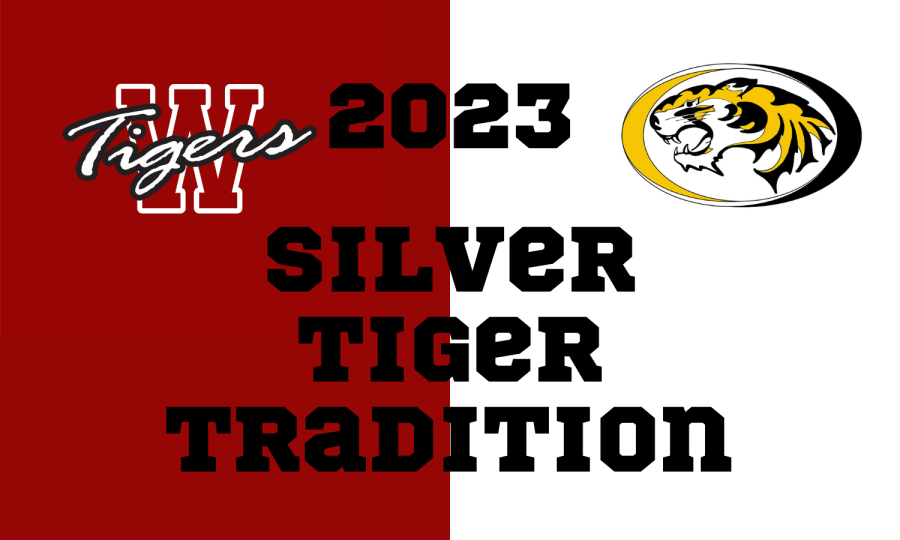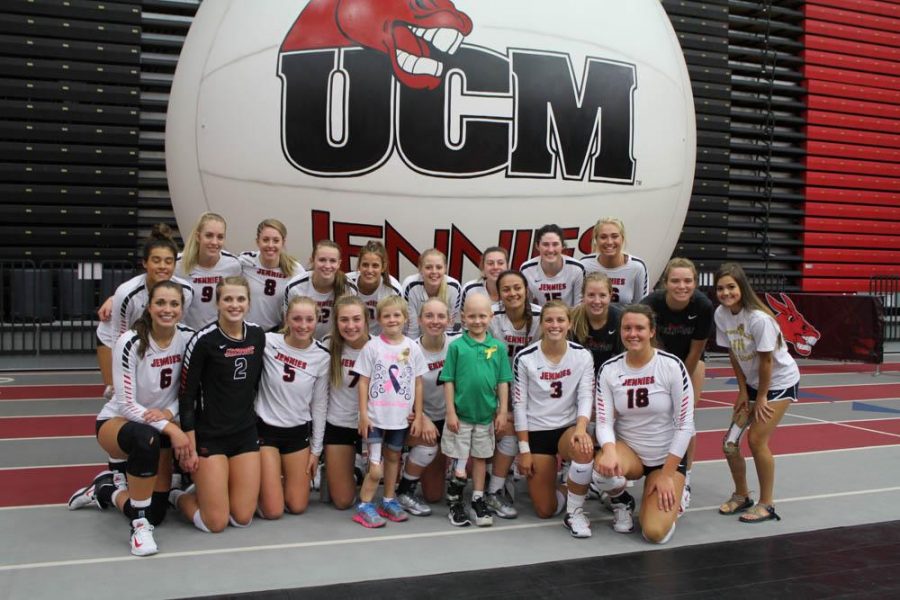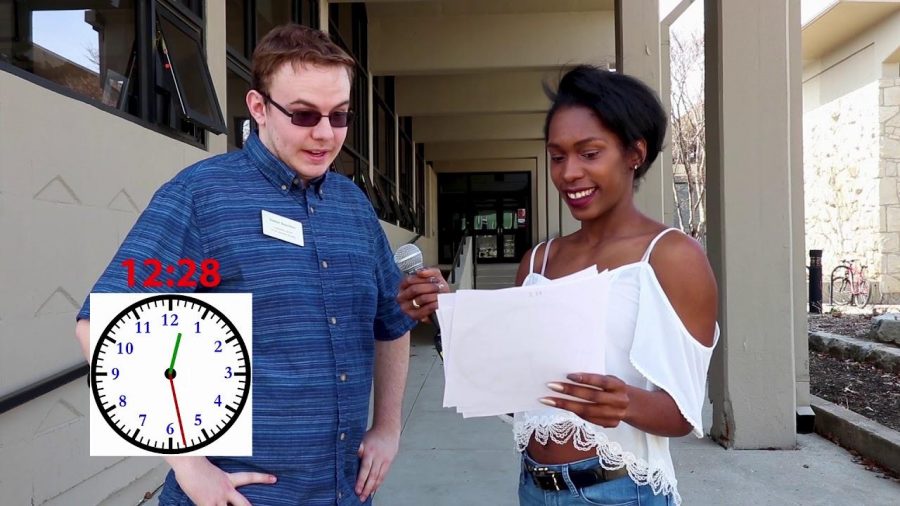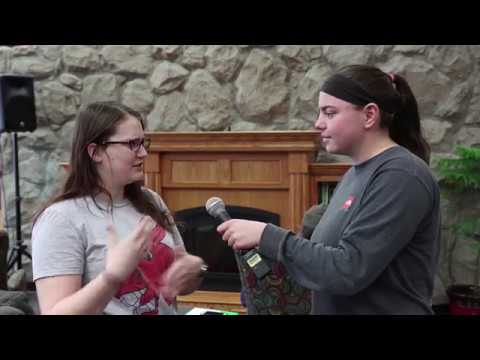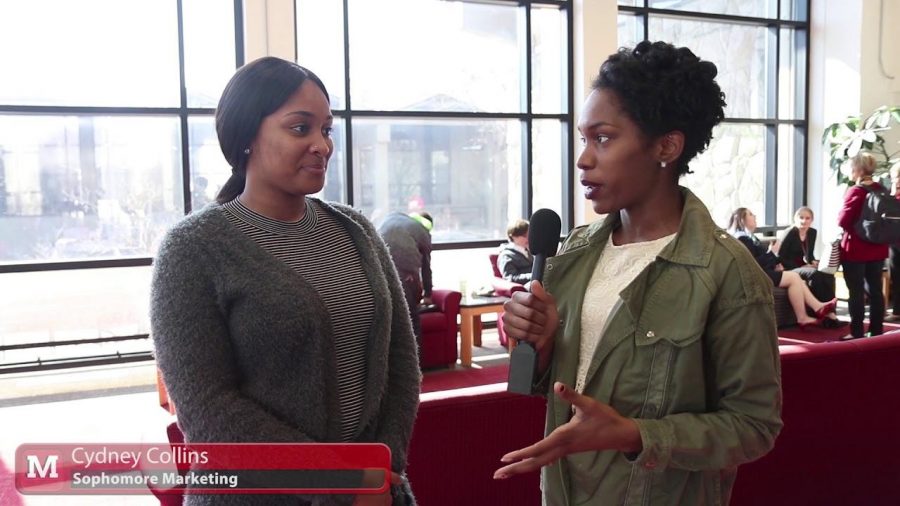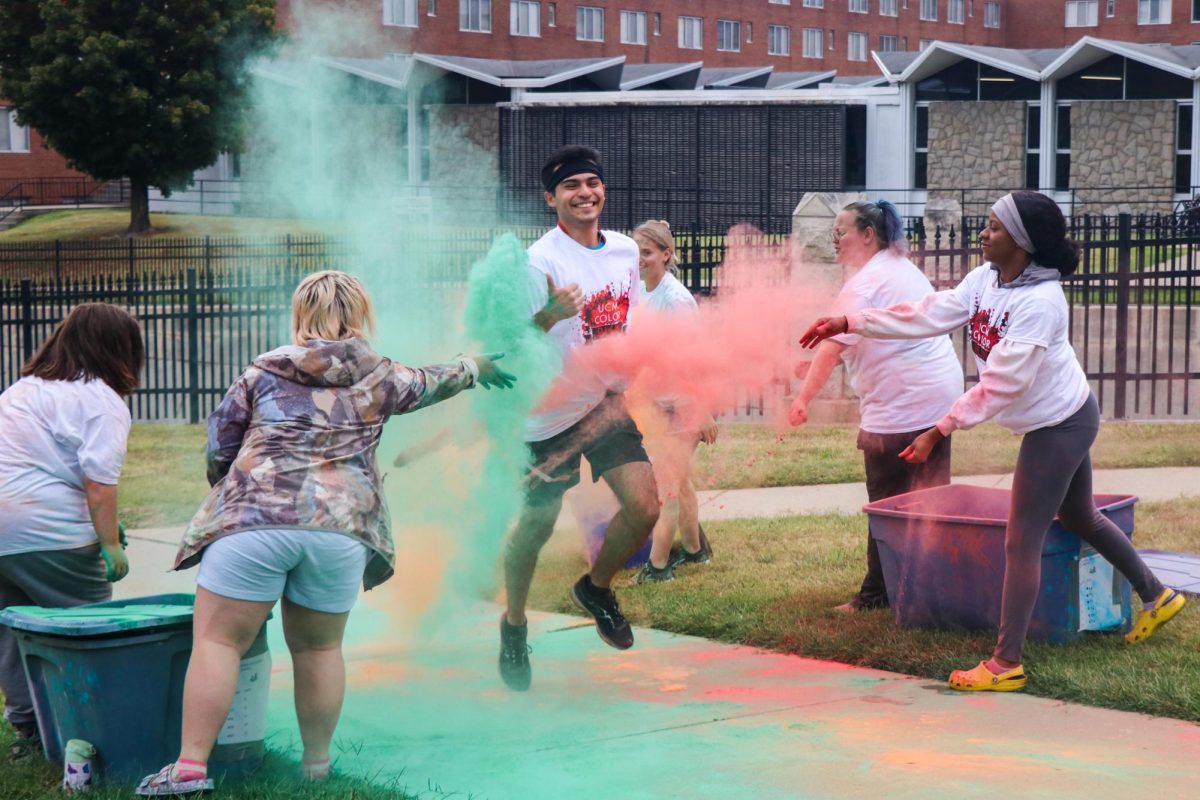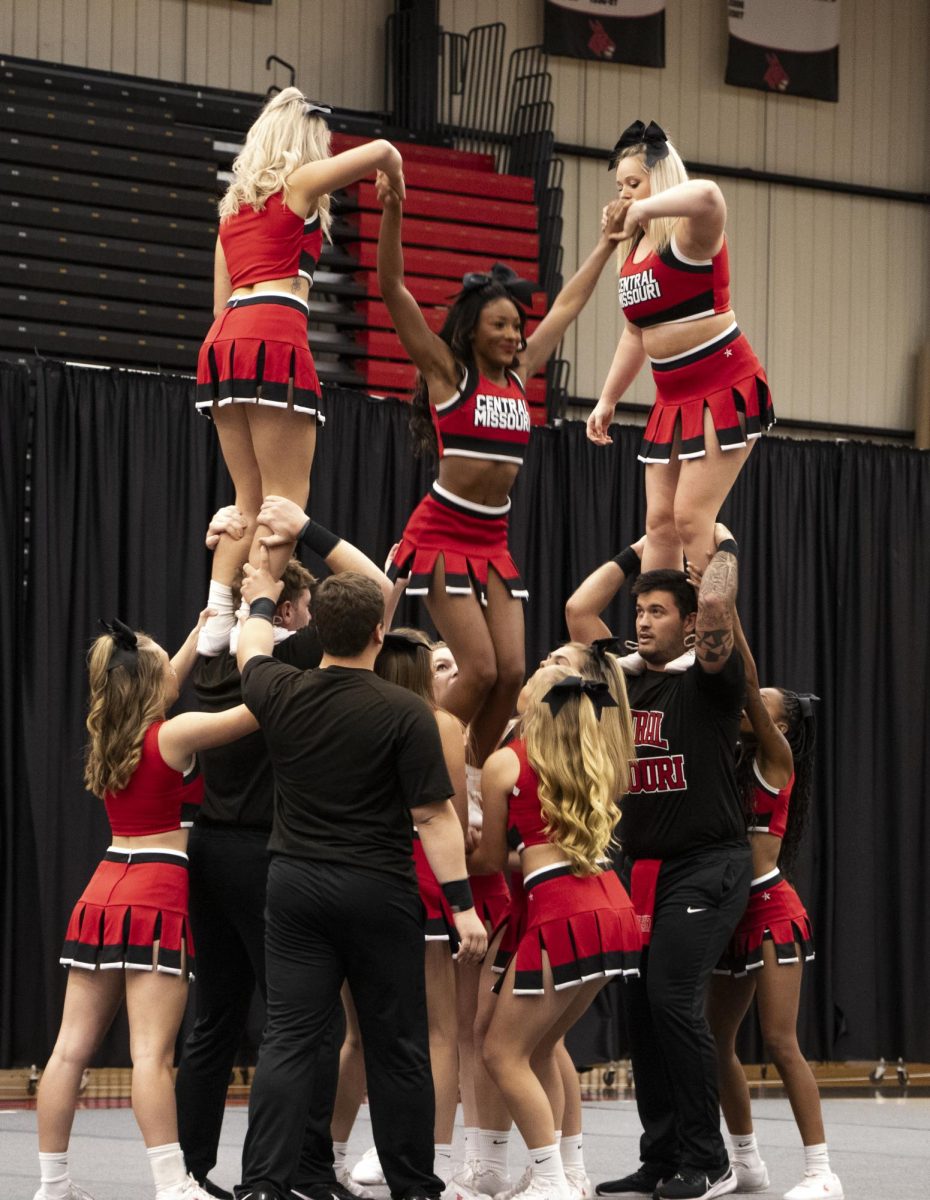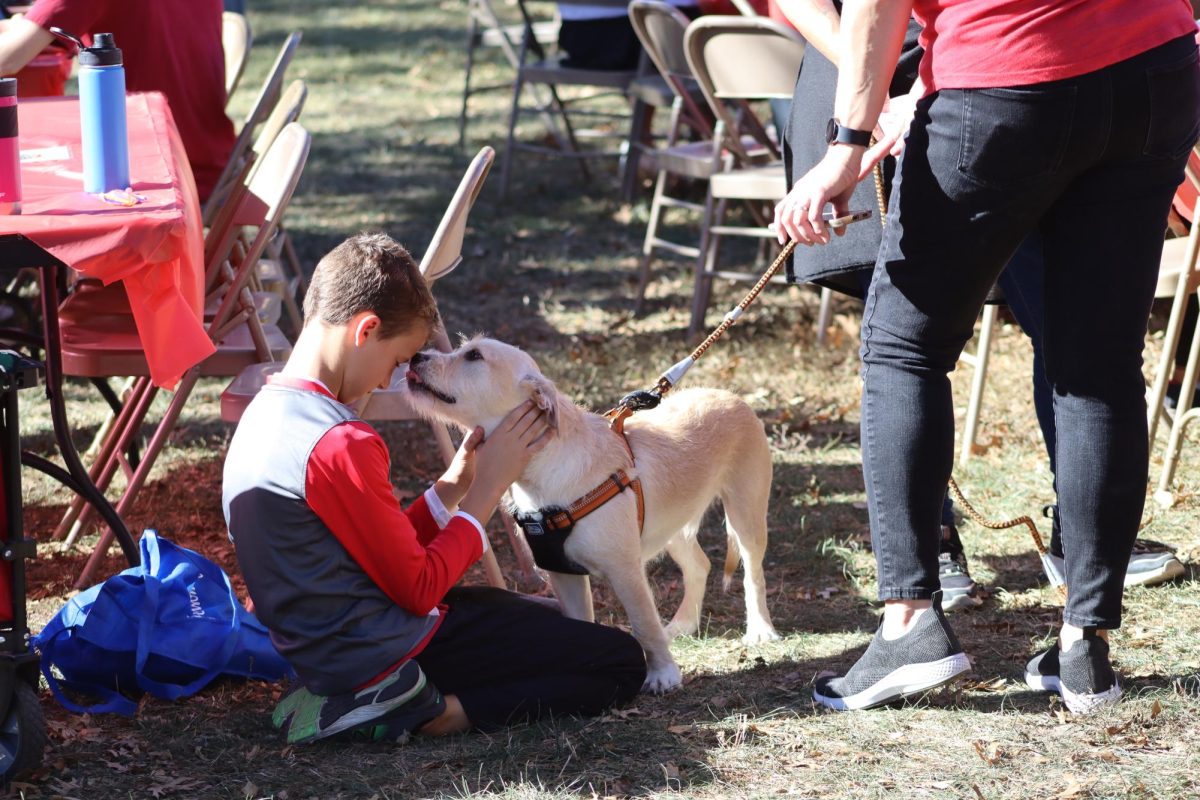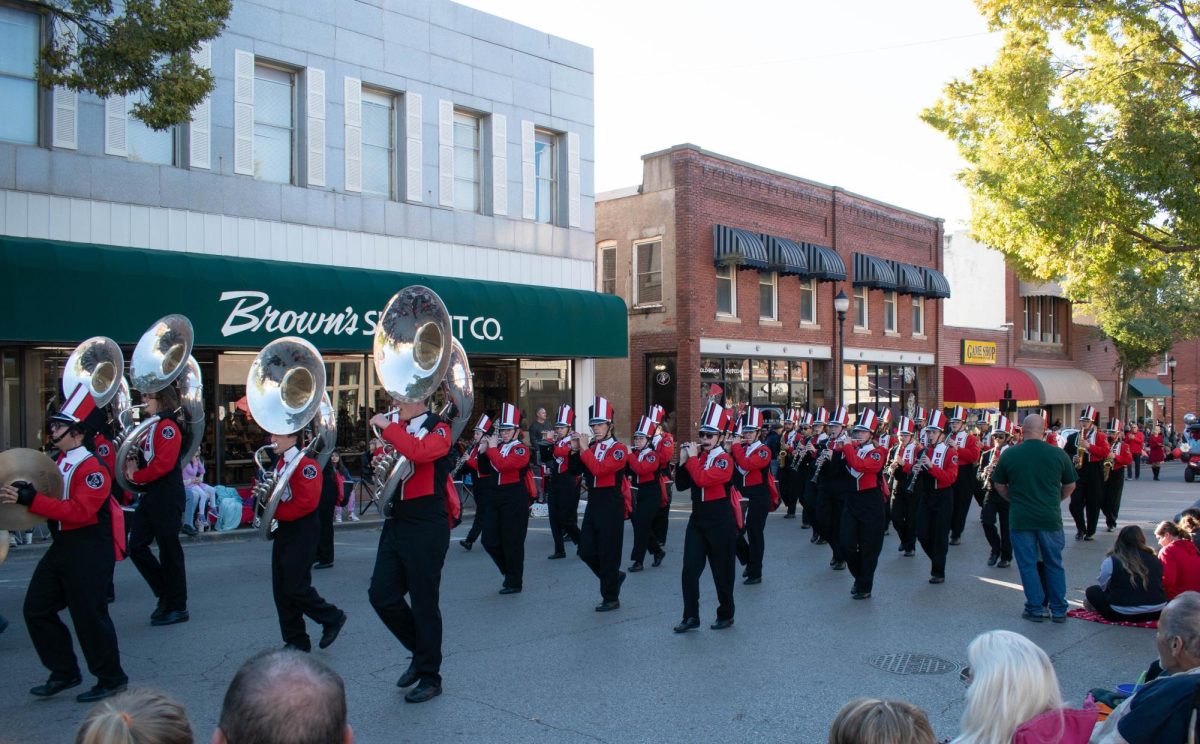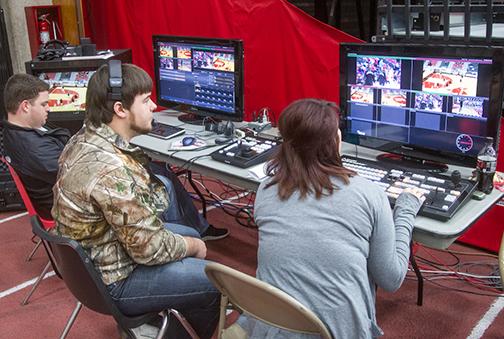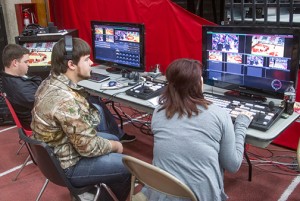
By JASON STRICKLAND
(WARRENSBURG, Mo., digitalBURG) – “Ready two, take two.” “Tilt up, two.” “Ready commercial, take commercial.”
These are just a few of the phrases people will hear from the UCM Media Network crew during a UCM sporting event.
The director calls the shots. The technical director controls the switcher to change the camera shot. The graphics operator makes the graphics and transitions them in and out during the broadcast.
Another person controls the replays, two people announce the action while the graphics person listens for the cue to take a commercial, and four camera operators listen to the director for the shots he or she wants.
Sounds like a busy operation, but that is only a snippet of what happens during a sports broadcast at UCM. The UCM Media Network streams the online broadcast live though America One Sports. Students need to be assigned to certain positions, and equipment needs to be set up well before the game and broken down after the game.
For example, the Jennies basketball team played Evangel at 7 p.m. Nov. 12, and Darin Plummer, an engineer at UCM, started setting up at 11:30 a.m. For the basketball doubleheader Nov. 10, the process began the day before. This is necessary because the equipment can malfunction at any time, including the TriCaster system, which is the Windows-based system that is used for the broadcasts.
“On Friday, I get over there and the actual TriCaster system wouldn’t boot up at all,” Plummer said. “I had to restore all of the factory defaults. If I had tried to do that an hour and a half before the game, I never would have got it done.”
The TriCaster is essentially a production truck in a box. It is only a few feet tall and about a foot wide. All of the video inputs, switcher, replay system and monitors are connected to the TriCaster.
Before every sporting event, the TriCaster system and all of its components are hooked up, cameras and tripods are set up, audio and video cables are run and taped down, sound checks are made with everyone on the crew and a preproduction meeting takes place so everyone knows their job. Crew members then take their spot and the real show begins.
Every position requires certain skills, and every position has a certain level of difficulty. But Plummer said there are a couple of spots that are at the top of the list in difficulty.
“I think the hardest job is kind of a tie between technical director and director,” Plummer said. “The director has a vision, and it’s not always easy for the director to relay that vision to the technical director. So that’s why I say it’s even.”
Sometimes the technical director has to take control if the director is struggling.
“The technical director has to be prepared to bail out the director,” Plummer said. “If the director gets in a position where they don’t call a shot to switch and the camera operator starts to let the camera down or whatever, the technical director needs to know that they have the support from the director to go ahead and change that shot.”
Students run the broadcast with help from Plummer and Joe Moore, assistant professor at UCM. Moore assigns the positions for each broadcast, and he says the most difficult part of each event is getting the students into a rhythm.
“We want all of our students to have a couple cracks at each position,” Moore said. “So, if you direct one game and then don’t direct again for three weeks, it makes it tough to really get comfortable and feel confident in what you are doing.
“But, really that’s OK. We want this to be a total learning experience. If a student only runs camera or only is a technical director, that student is not going to get the full benefit and learn all about the process.”
Since the TriCaster does not have all of the components of a professional production truck, it limits what the broadcast can have, but Moore said the finished product is not much different than a professional broadcast.
“I watch our broadcasts and I don’t believe we are far off,” Moore said. “Yes, we take some shots that shouldn’t be taken at a specific time. But that’s part of the learning. And no, we don’t get all the different angles and can’t come back with multiple replays from different angles, but you are comparing a 20-camera setup with multiple replay machines and personnel versus four cameras with one replay.
“Our graphics are every bit as good, our base shots are every bit as good, and as the game goes along and all the students get comfortable in their respective positions, I think the overall quality rivals what I see on Sunday afternoons or on ESPN.”
Moore says the announcing has the potential to be just as good, too.
“We have some really talented kids when it comes to announcing,” Moore said. “They are raw, and I would love to develop an announcing boot camp sort of training for those who are really serious about it. But I’ve been really impressed with the announcing. I’m just so proud of our students and what they have accomplished.”
After that final buzzer or whistle sounds, or the final out is made, that is when Moore gets excited – and it’s not because he gets to go home.
“There is something about producing a quality product, and that is what they have done every game, and seeing the students’ pride in their work. That really gets me fired up. That’s why I teach – to see that light bulb come on, and to see the excitement in my students’ eyes when they have done a good job and have learned something new.”
When the game is over, it is not quite time to call it a day.
“OK, everyone break down your equipment and put it away,” the director says after the event.
Then the preparation process starts all over again.
“Here you go,” Moore says while handing the graphics computer to the next graphics person. “Make the graphics for the next game.”
Recent Stories
- New Trend: Artists switching genres
- UCM Greek Life Prepares for Greek Week
- “Xanadu”, the absurd and the heartfelt show by UCM Theatre
- Spring Break Poll
- Skinner on the Street
- SGA to hold upcoming election
- “Now that’s a party!”: A “Mean Girls” (2024) Review
- Mo’s Activity Council hosts Mean Girls actor, Daniel Franzese
- Former World Series MVP speaks at UCM First Pitch Banquet
- UMG has falling out with TikTok due to contract diputes

